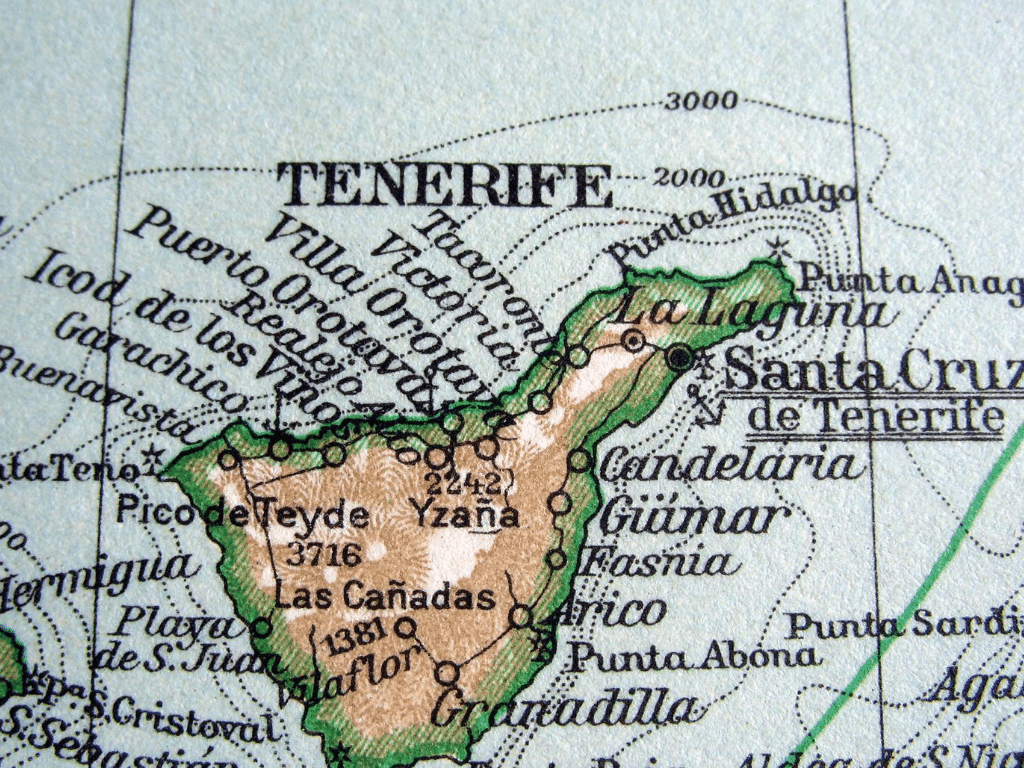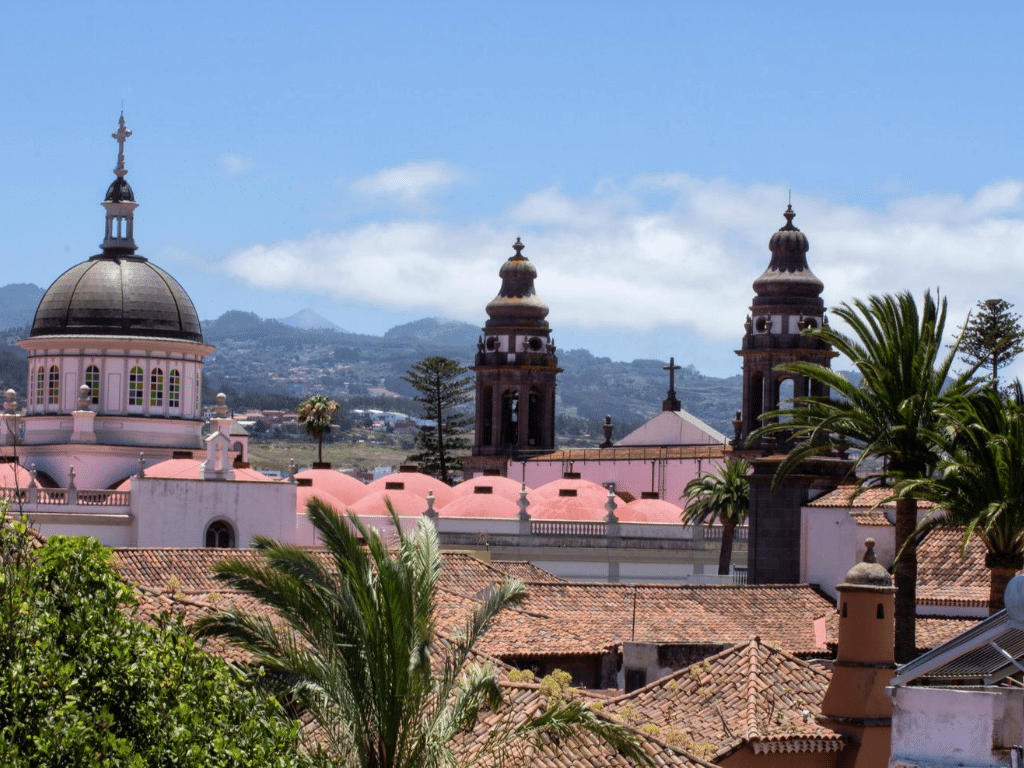Deciding where to stay on Tenerife can be a tough decision.
Tenerife is like a 5-course taking menu with matching wine. It hits all the senses, takes you through a variety of textures and leaves you feeling comfortably satisfied.
The island of eternal spring has it all.
Wild beaches with long stretches of fine black sand, impressive mountain ranges with incredible viewpoints, an annual carnival that rivals that of Rio de Janeiro, microclimates, banana plantations, the highest point in the whole of Spain (volcano El Teide), historic towns, a vibrant capital city, ancient forests, award-winning wine production, a UNESCO World Heritage site, amazing dive spots, and of course that year-round warm climate that makes it so attractive.
Let me clear one thing up first: I love both the north and south of Tenerife equally for unique reasons. This article is to help you decided where to explore during your holiday on Tenerife, based on what you love doing.
North Tenerife or South Tenerife?
It’s easy to assume that the south is for beach bums and the north is for hikers. Some of Tenerife’s most stunning beaches are in the north and the south has some excellent hikes, too. Don’t let anyone try to convince you otherwise.
Remember, there’s no reason you can’t split your holiday in two and share your time between north and south Tenerife and experience them both.
A bitesize geography lesson on Tenerife
A common misconception is how Tenerife is divided into north and south. These are terms used by the locals to distinguish which side of the island they are referring to, though it’s not divided how you might think.
Essentially, the island is separated into two halves by drawing a line through the middle from Playa San Juan to Punta Anaga.
The island has El Teide to thank for its diverse geographical landscape and microclimates.
Grab your pen and paper, here’s where it gets geeky.
The trade winds blow over from the nearby Sahara Desert on Tenerife’s south side, collecting moisture from the ocean on the way. The water particles flying through the air come to a grinding stop when faced with the monumental 3,700-meter volcano, El Teide, and its mountain range which proudly lays in the center of the island. A mar del nubes, or sea of clouds, is created and rains down on the hilltops of the north of the island.
Introducing North Tenerife
One of the first things you will notice about the north of the island is it’s lush and green. This makes north Tenerife ideal for agriculture, with seemingly endless kilometers of banana plantations, potato fields, and vineyards. Yes, there is more annual rainfall in north Tenerife but you will find more warm sunny days here than most of central Europe.
If hiking and wild, natural beaches are your thing you’ll be like a kid in a sweet shot in north Tenerife. Likewise, if you’re a wine lover and are keen to learn about the winemaking traditions of Tenerife –
Bodegas Monje y La Casa del Vino are a great place to start.
North Tenerife is rich in local culture and tradition. Head to the historic towns of La Laguna, La Orotava, Garichico, and Puerto de la Cruz to admire traditional Canary architecture and visit the museums where you can discover everything from local art and crafts to the history of Los Guanches, the Canary Islands aboriginal people.
Where to stay in North Tenerife
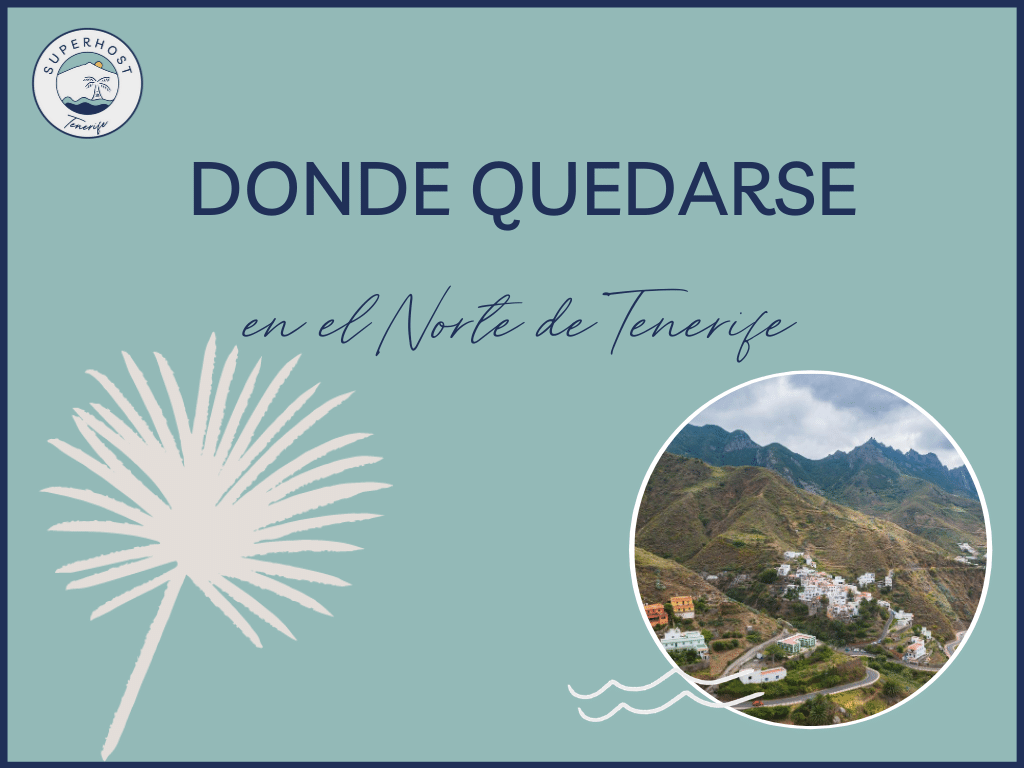
San Cristóbal de La Laguna
La Laguna is arguably one of the prettiest towns in Tenerife. Wander through the grid-style streets of La Laguna old town, the blueprint for many South American towns and cities after being colonised by the Spanish, and discover Tenerife culture and history at its finest.
Look upwards and admire the traditional Canary architecture, wooden balconies and original clay roof tiles with succulents springing out of the top.
La Laguna has UNESCO World Heritage site status and is also the island’s university town, giving it that laid back, cosmopolitan vibe.
The old town is full of cosy cafés, traditional Spanish bars, and some excellent restaurants, independent shops, art galleries, museums and of course the famous Cathedral.
Stay in this cosy loft with wonderful views of the city or this stylish apartment close to transport links in the university area.
El Sauzal, La Matanza y Santa Úrsula
I’ve decided to name this area of north Tenerife the sunset coast because it faces the west just enough to enjoy those beautiful Tenerife sunsets.
If you choose the right holiday rental you will be able to enjoy incredible sweeping views of the volcano, El Teide, the Atlantic Ocean, and the valley of La Orotava. You can find some amazing villas with a jacuzzi or swimming pool and incredible views in this area of north Tenerife,
like this one.
Explore some of north Tenerife’s beautiful black sand beaches with Playa del Bullullo, Playa del Socorro, and Mesa del Mar each within 20 minutes’ drive.
Being Tenerife’s main wine-growing region this area is home to the most prestigious vineyards on Tenerife. We recommend
Bodegas Monje for their wine tours, wine tasting, and their delicious restaurant – the brunch menu is not to be missed!
Garachico
This small town on the very northwest tip of the island has a fascinating history.
A volcanic eruption in 1706 from the nearby Teide essentially covered the whole town in lava, filling in the harbour which was Tenerife’s most important port at the time and thus effectively destroying the towns booming economy. The hot lava solidified when it came into contact with the ocean, creating the famous rock pools, or “charcos”, of Garachico.
Wander through the cobbled stone streets of the old town, popping into the local independent art galleries and shops, take a swim in the natural pools and go wine tasting in the nearby vineyard.
Introducing South Tenerife
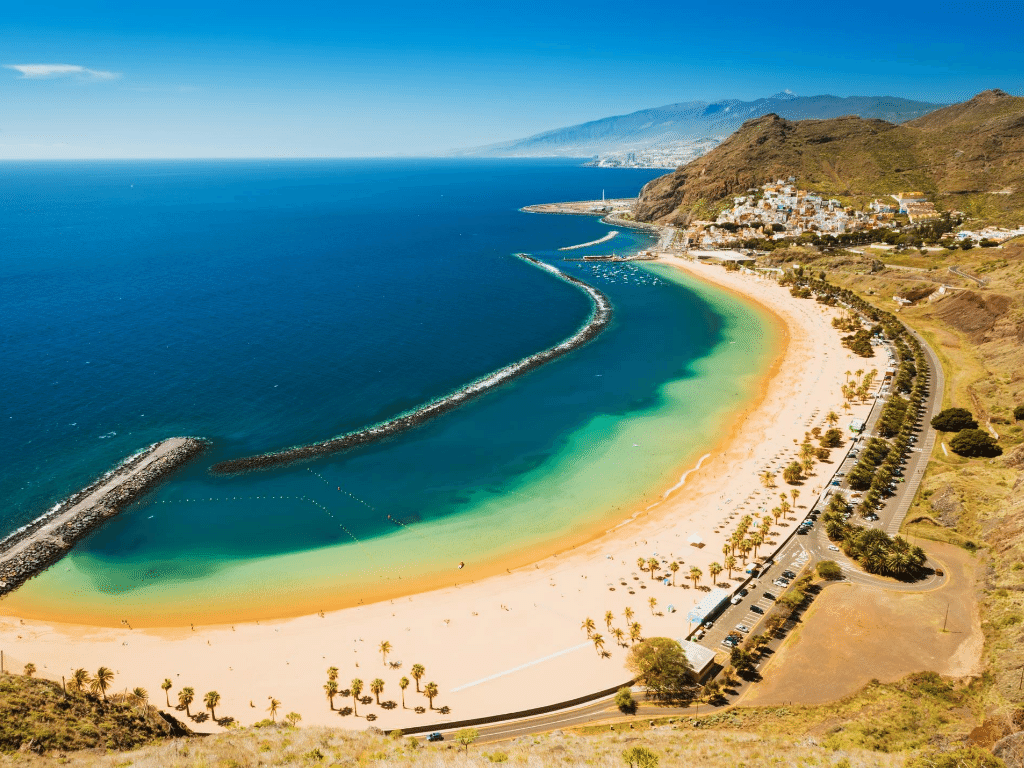
The south side of Tenerife faces towards the Sahara Desert and benefits from a warm climate all year round. Its dry atmosphere creates a desert-like landscape, where cacti, aloe vera and succulents grow in abundance.
The south-west part of the island is where you will find the large holiday hotel complexes and more touristy areas. There are some gems in this area, amongst the concrete jungle and 5-star resorts.
The south-east is home to the capital city of Santa Cruz de Tenerife, the iconic Las Teresitas beach (pictured above) and some charming little local beach towns.
Where to stay in South Tenerife
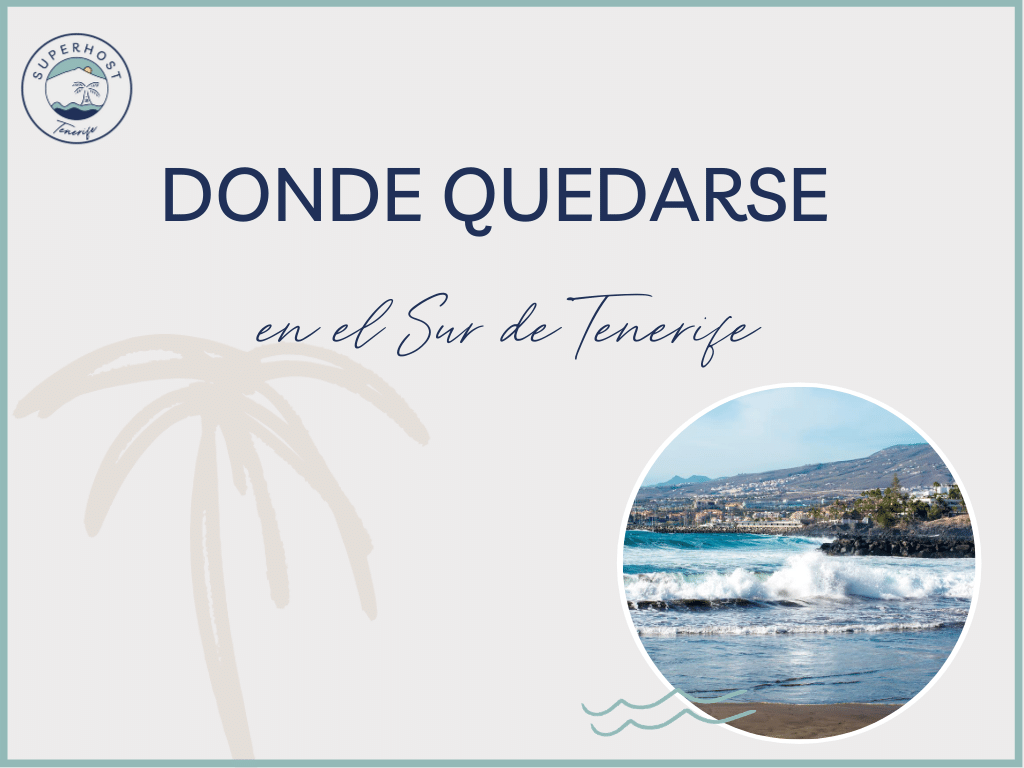
Las Galletas
Las Galletas literally translates to “The Biscuits” which perfectly describes the sandy coloured coast of this seaside village. With a small port, promenade, beach, and many fish and seafood restaurants, it’s a great option if you’re looking for a relaxing and authentic Tenerife experience by the ocean.
From Las Galletas you can easily explore the southwest coast of Tenerife with its biscuit sand beaches and crystalline blue water. Some of my favorite beaches in the area are La Tejíta and La Caleta.
If you’re into wind and watersports, Las Galletas is the ideal place to stay as it’s a short drive from kitesurfing and windsurf haven, El Médano, but it doesn’t have the same windy weather making it more pleasant.
You can find oceanfront apartments in Las Galletas with direct views of the ocean and a stone’s throw from some excellent restaurants and bars.
Boca Cangrejo y Radazul
Boca Cangrejo is a small coastal village easily reached from a picturesque winding road down from the main highway that connects the south to Santa Cruz de Tenerife.
Originally a fishing settlement it’s now an authentic representation of Canary life by the ocean. It feels secluded in Boca Cangrejo with the convenience of being 15 minutes’ drive to the capital city.
You won’t find holiday rentals in Tenerife closer to the ocean than in Boca CangrejoYou won’t find holiday rentals in Tenerife closer to the ocean than in holiday rentals .
Spend the afternoon at the local black sand beach Playa La Nea with a fresh mojito from the beach bar and wander home for a BBQ on the terrace of your holiday rentals with views and sounds of the ocean crashing against the waves. Bliss.
Radazul is the next village along at just a 15-minute walk from Boca Cangrejo.
Radazul is a hub of activity next to sleepy Boca Cangrejo where you can go sailing, fishing, rent a water jet ski, or take a diving course with the numerous dive schools there, including Deep Ocean Diver Tenerife, Apnea Canarias Tenerife Freediving Center.
Both villages are untouched by mass tourism, yet well connected to the rest of the island.
Santa Cruz de Tenerife
The island’s capital city and another great base for exploring the whole island, Santa Cruz de Tenerife is especially great for visitors who don’t want to rent a car. The bus network around the island from Santa Cruz is easy to navigate, reliable, and cheap.
There’s plenty to do in the city. Spend a morning at the market, Cooperativa Mercado Nuestra Señora De África.
Santa Cruz has all the ingredients of a classic Spanish city: plazas, beautiful green parks – don’t miss Parque Garcia Sanabria, pedestrianized shopping areas plus a recently renovated promenade that runs alongside the ocean.
Tenerife north or Tenerife south in a nutshell
Base yourself in north Tenerife if you prefer more rural mountain settings or small towns or cities full of culture and history, or head to south Tenerife for authentic seaside villages where you can literally sleep “above” the ocean or enjoy the vibrant bustle of Spanish cities like Santa Cruz de Tenerife.
If you’re still undecided on where to stay in Tenerife, hit the Message Us button in the bottom right corner and I’d be happy to help you decide.
Do you have a favourite place to stay on Tenerife? Why not share it in the comment below.


